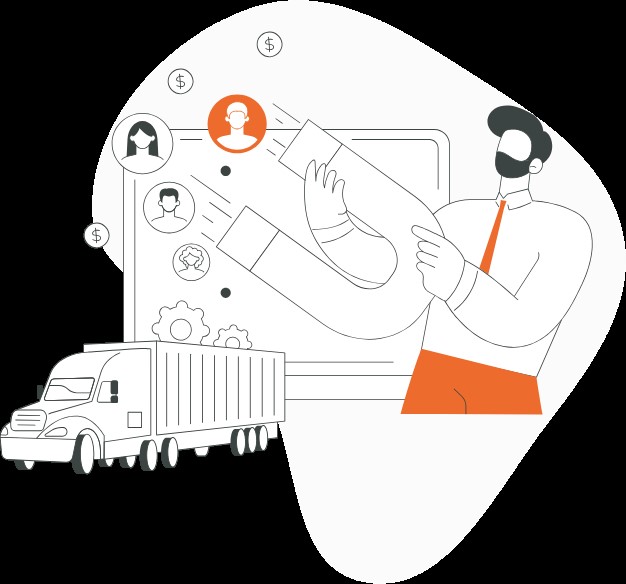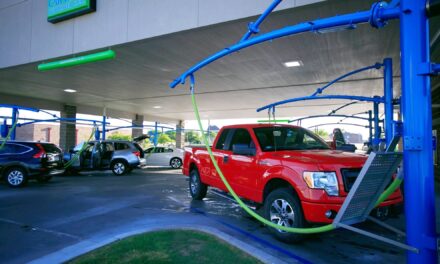The vehicle shipping industry operates on tight timelines, fierce competition, and minimal margin for error. For auto logistics providers and car transport brokers, the pressure is constant: clients expect fast quotes, accurate ETAs, and seamless coordination across multiple states. In this high-stakes environment, generating new business isn’t just about visibility — it’s about quality.
Gone are the days when brokers could rely solely on referrals or wait for customers to find them through a Google search. The industry has become too saturated, and the cost of inaction is too high. Every wasted lead is time lost, every poor-fit inquiry drags down efficiency. What separates top-performing firms from the rest is not just how many leads they get — it’s the quality of those leads and the systems built to convert them.
The Hidden Cost of Bad Leads in Car Transport
On the surface, more leads might seem like a good problem to have. But when the majority are unqualified, vague timelines, mismatched routes, or fake contact info — the impact on operations can be severe.
Poor lead quality leads to:
- Lower booking rates: Sales reps spend more time quoting, less time closing.
- High churn: Prospects ghost after receiving a quote or delay bookings indefinitely.
- Strained capacity: Dispatch teams burn time scheduling jobs that never materialize.
- Damaged reputation: Follow-ups to poor leads often result in negative customer interactions.
Over time, these inefficiencies snowball. You’re not just losing revenue—you’re wasting internal resources and losing morale.
What Makes a Car Transport Lead ‘High-Quality’
Not every inquiry is equal. What sets a qualified vehicle shipping lead apart is clear and measurable:
- Booking Intent: The prospect is actively looking to ship a vehicle, not just researching.
- Shipping Urgency: Move date is within a realistic, short-to-medium timeframe (1–14 days).
- Route Fit: The origin and destination align with your active service lanes.
- Vehicle Details: Type, make/model, and condition are stated — no vague entries.
- Verified Contact Info: Email and phone numbers are accurate and responsive.
The more of these indicators present, the more efficient your quoting and conversion process becomes.
How to Source High-Intent Car Transport Leads
There are three main ways brokers generate leads:
- Paid ads — High intent but high cost, especially in peak seasons.
- Inbound marketing — SEO, referrals, content — reliable but slow to scale.
- Specialized lead providers — Pre-qualified contacts delivered in real-time.
Each has its role, but most growing brokerages find themselves using a hybrid approach. The key is to match each channel’s strength to your operational capacity.
To boost conversion rates and save time on unqualified prospects, brokers can turn to car shipping lead providers that offer verified leads — a scalable and cost-effective way to streamline operations.
These providers often allow segmentation by vehicle type, location, or timeframe, reducing quote churn and improving time-to-close.
Real-Time Delivery to Your CRM: The Competitive Edge
Speed matters in sales. If you’re the first to call, email, or text a lead within minutes of submission, your close rate can double.
Real-time CRM integration helps brokers:
- Trigger automated workflows: Welcome emails, estimate links, quote forms
- Distribute leads smartly: Assign by region, rep availability, or service type
- Track performance: View quote-to-booking metrics by source and rep
Combined with auto-dialers or smart email sequencing, CRM-ready leads empower your team to close faster and more confidently.
Scaling Your Brokerage with Data-Driven Lead Strategies
Growth isn’t just about handling more jobs — it’s about handling the right jobs.
Using lead segmentation and smart filters, you can:
- Focus on profitable routes (e.g., East Coast snowbird traffic)
- Prioritize leads with flexible move dates for easier dispatching
- Avoid overloading carriers with misaligned jobs
With better lead data, you reduce missed pickups, optimize routes, and improve your margins per job.
Imagine converting 1 in 5 leads into booked jobs instead of 1 in 15 — that’s not just a win for sales, it’s a win for dispatch, customer service, and profit.
Conclusion: Stop Guessing, Start Growing
In vehicle shipping, success comes down to what you can control. You can’t control market demand, seasonal fluctuations, or fuel costs. But you can control your lead quality and how you respond to it.
Investing in auto transport lead generation with a focus on data, urgency, and accuracy helps build a sales engine that scales.
Audit your current lead sources. How many inquiries result in real conversations? How many turn into booked jobs?
Stop chasing quantity. Focus on verified, qualified vehicle shipping leads and give your brokerage the tools to grow predictably, profitably, and with confidence.






